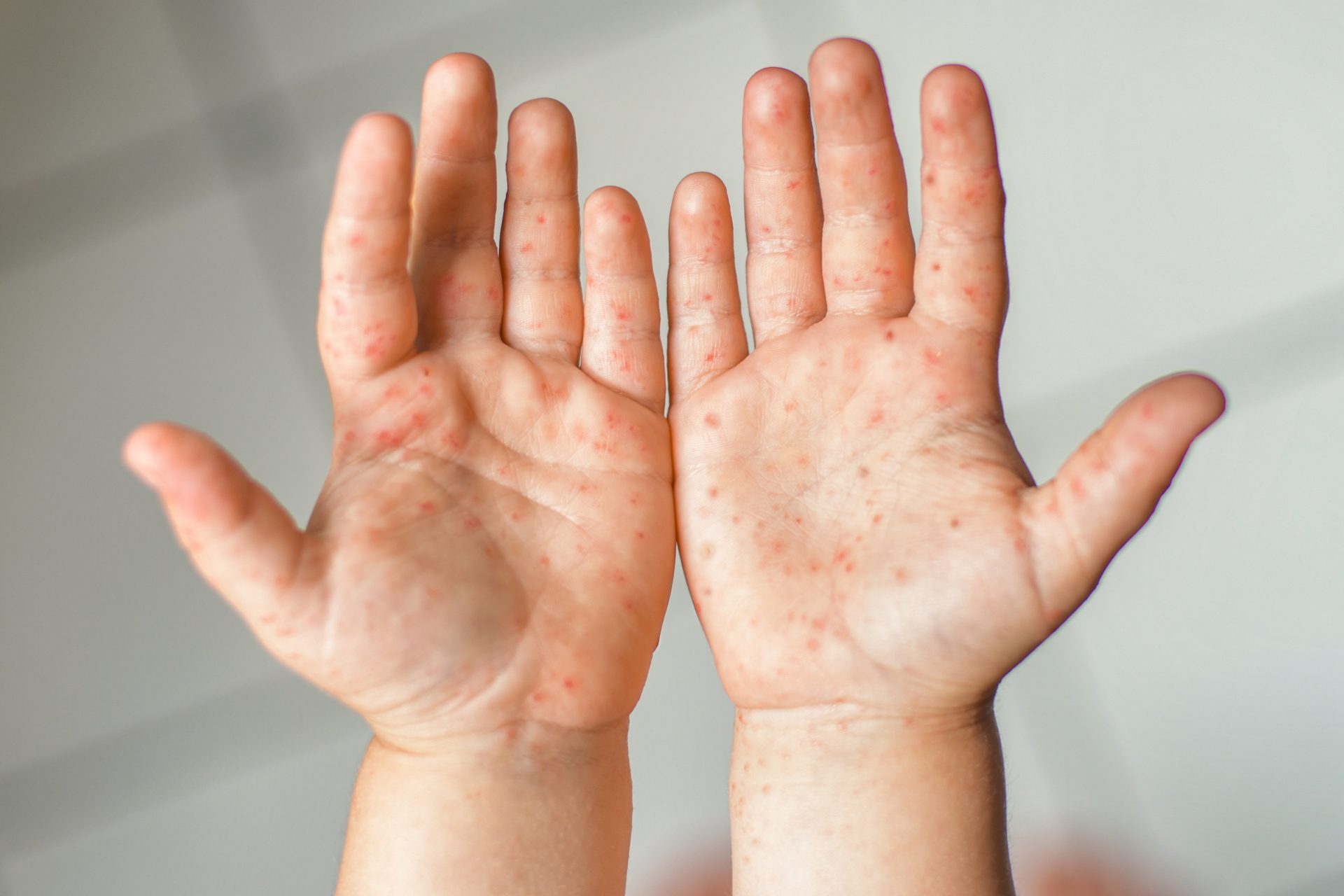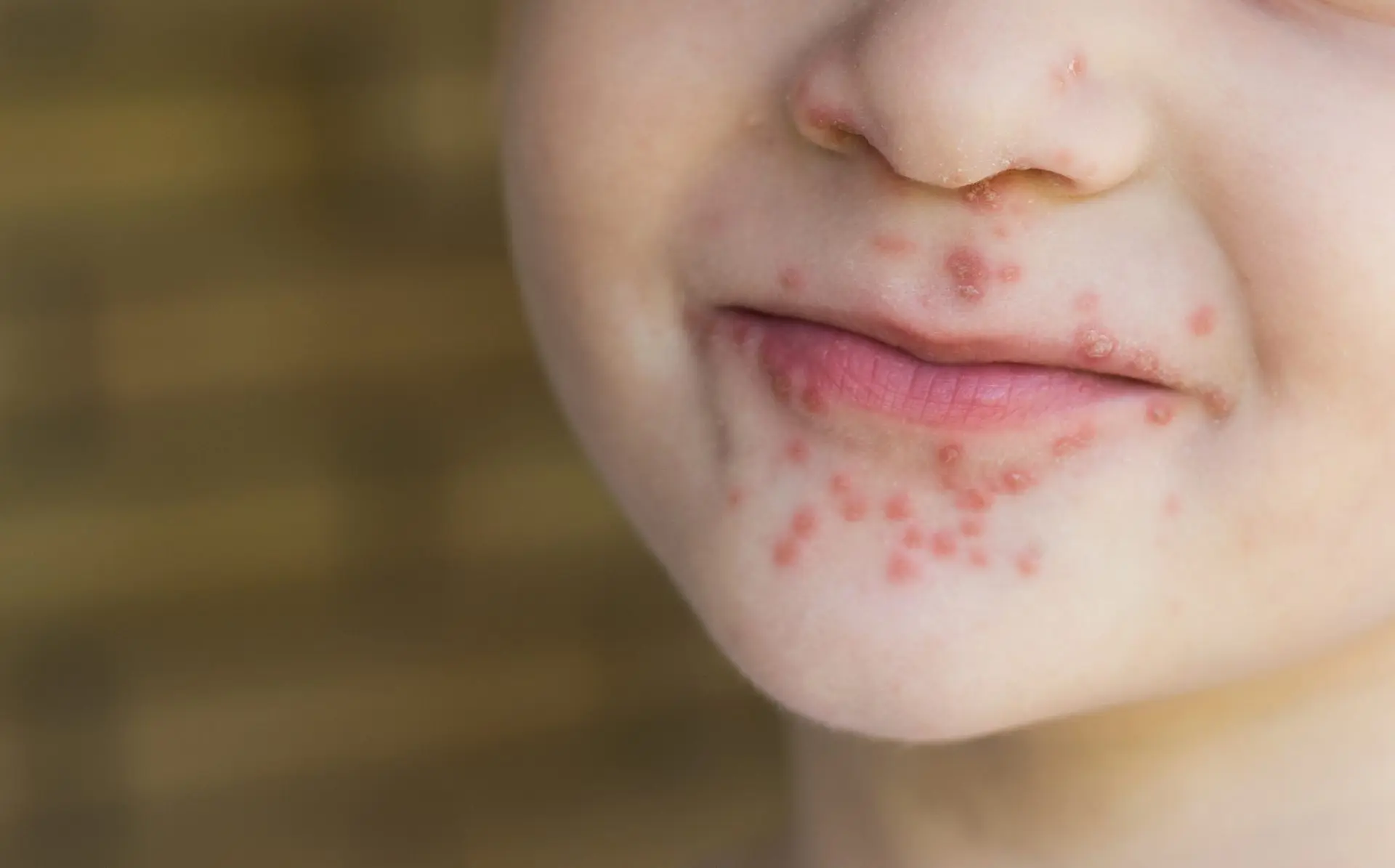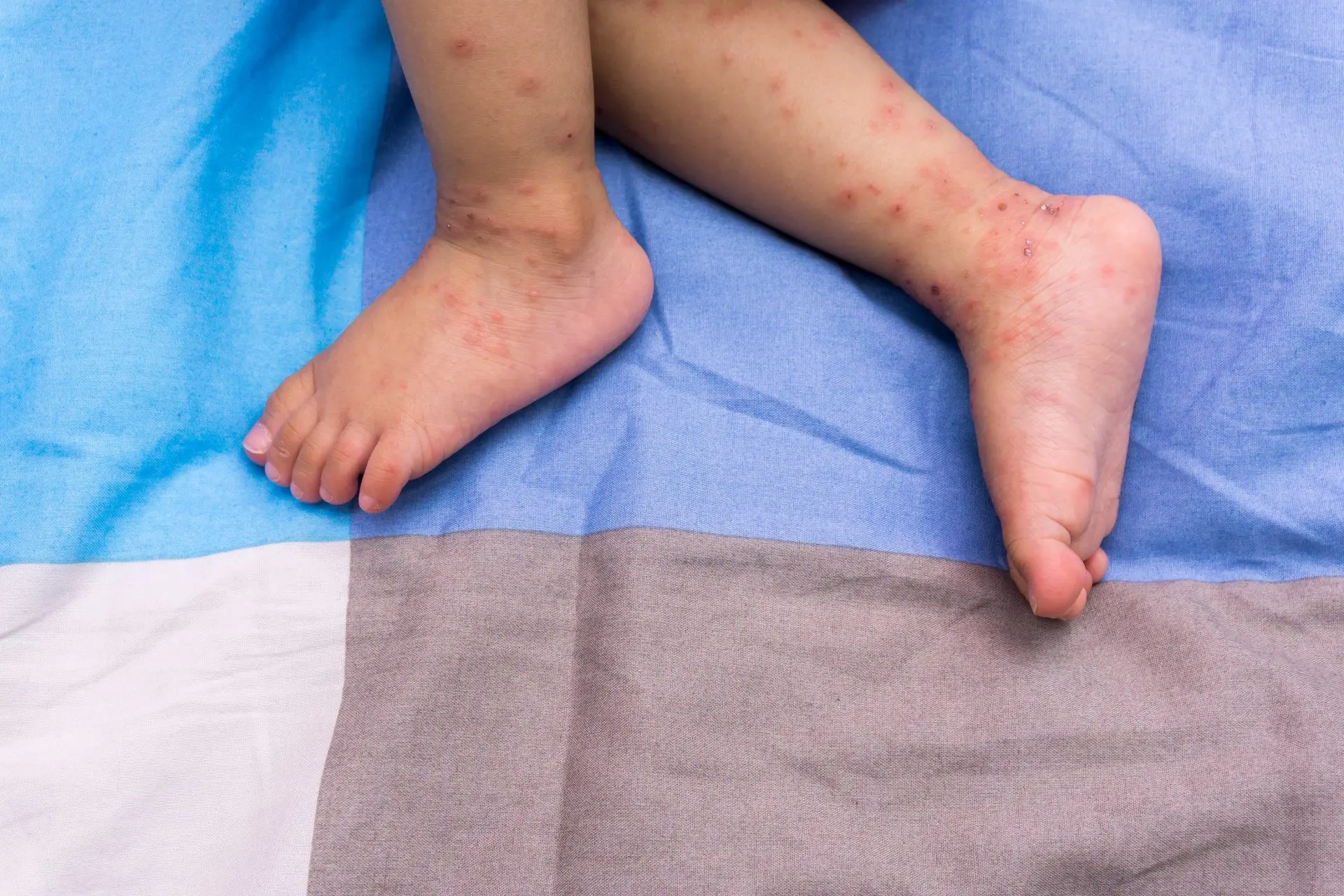
What does hand-foot-and-mouth disease (HFMD) look like? The symptoms can look different for kids and adults. See what the symptoms can be and how to treat them.
What is Hand-Foot-and-Mouth Disease?
HFMD is a common viral illness caused by the enterovirus, most commonly the coxsackievirus. The Centers for Disease Control and Prevention says the disease primarily affects children under 5, but anyone, including adults, can contract it. It’s typically a mild illness.
The disease is highly contagious and often spreads through close contact with an infected person, such as coughing, sneezing, kissing, hugging, or spitting when an infected person talks. Adults can contract it when changing diapers. Sharing utensils and toys or touching contaminated surfaces can also contribute to the spread of the virus.
Symptoms of Hand-Foot-and-Mouth Disease
The initial symptoms of HFMD often resemble the common cold, including mild fever, sore throat, loss of appetite, and general malaise. Children will typically be fussy.
Within 1 to 2 days, distinctive symptoms begin to appear, typically characterized by the development of painful sores or blisters on the palms of the hands, soles of the feet, and inside the mouth. These blisters may be small and red initially, eventually progressing into grayish or white ulcers with a red border. Some individuals may also experience a rash on the buttocks, arms, or legs.
The painful sores may appear one or two days after feverish symptoms begin. According to the CDC, they typically go away without treatment in 7 to 10 days.
Hand-foot-and-mouth in adults, teens, and older children isn’t very common, but it is possible. However, the severity of symptoms often differs between age groups. Children tend to show more pronounced symptoms, including a higher fever, more sores, and discomfort while eating or drinking. In contrast, hand-foot-and-mouth disease in adults usually has milder symptoms, with some individuals exhibiting no symptoms at all. It’s important to note that the potential for spreading the virus remains the same for both children and adults.
Hand-Foot-and-Mouth Pictures
Think you or your child are experiencing the symptoms above? Look at these hand-foot-and-mouth pictures of symptoms to see if your sores are similar.



Treatment for Hand-Foot-and-Mouth Disease
There is no specific antiviral treatment for HFMD. Most cases of HFMD resolve on their own within 7 to 10 days. Antibiotics aren’t effective against viral infections like HFMD and shouldn’t be used unless there is a secondary bacterial infection present. The primary focus of treatment is to alleviate discomfort from symptoms during the course of the illness. Here are some recommended measures for managing HFMD:
- Pain and Fever Relief: Over-the-counter pain relievers such as acetaminophen (Tylenol) or ibuprofen (Advil, Motrin) can help reduce fever and relieve pain associated with the sores. Follow the recommended dosages for age and consult a healthcare professional if you have any concerns.
- Hydration: Be sure to drink enough liquid to prevent dehydration, especially if mouth sores make it painful to eat or drink. Offer cool liquids, popsicles, or soft foods that are easy to swallow. Avoid acidic or spicy foods that may irritate mouth sores.
- Mouth Pain: Rinse the mouth with a warm saltwater solution (1/2 teaspoon of salt dissolved in 8 ounces of warm water) several times a day. This can help relieve discomfort and promote the healing of mouth sores. Avoid using mouthwashes or mouth rinses that contain alcohol, as they can further irritate the sores. Check with a provider before applying over-the-counter oral analgesic gels or numbing sprays for temporary relief.
- Controlling Itchiness:Use calamine lotion or other soothing creams to alleviate itching and discomfort if a rash develops. Avoid scratching the rash to prevent secondary bacterial infections.
Since HFMD is highly contagious, isolating yourself or your child is essential until the symptoms improve and the risk of spreading the virus decreases. Stay home from work or keep your child home from school or daycare until the fever subsides and mouth sores have healed. Practice good hygiene by frequently washing hands with soap and water, disinfecting commonly touched surfaces, and avoiding close contact with others to prevent transmission.
When to See a Doctor
If you have concerns about the severity of symptoms or the management of HFMD, it’s always recommended to consult a healthcare professional for guidance and reassurance. But in most cases, home remedies and over-the-counter medications can manage hand-foot-and-mouth disease. There are certain instances where you should see a medical provider:
- High Fever: There are various thresholds for when a fever should raise concern. According to The Mayo Clinic, you should see a doctor if you see these signs:
o Your child is 3 months or younger and has a temperature of 100.4 F.
o Your child is 3 to 6 months old and has a temperature of 102 F.
o Your child is 7 months to 2 years old and has a temperature of 102 F that lasts longer than one day.
o For adults, see a doctor if your temperature is 103 F or higher.
- Dehydration: Signs of dehydration include decreased urine output, dry mouth, and lethargy. Seek medical attention promptly if these symptoms manifest in you or your child.
- Compromised Immune Systems: While HFMD is usually a minor illness, those with a weakened immune system should consult a doctor.
- Severe Pain: Medical professionals can recommend appropriate pain management strategies if the pain or discomfort becomes severe from the mouth sores or blisters.
- Secondary Infections: If you notice signs of a secondary infection, such as redness, warmth, swelling, or purulent discharge from the sores, consult a doctor. Secondary bacterial infections can occur in open sores and may require medical intervention.
Seek Help at American Family Care
If you’re concerned at all about your symptoms from hand, foot, and mouth disease, visit a medical provider. American Family Cares are state-of-the-art family urgent care clinics with compassionate providers that can help you or your child find relief. You don’t need to make an appointment; just walk in. Our clinics have extended hours and are open on the weekend for your convenience. Find a location near you.


